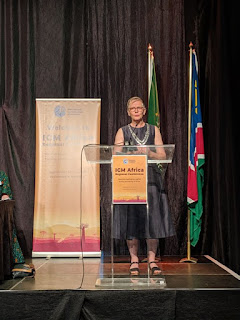The emotional work of being with women is immense and what we see and come to embody is that birth is now a battle ground, leaving bruised, battered and traumatised women in its wake, with many midwives the witness or the handmaids of the hospital birth machine
Click on the link to read the full post
I walk into the Panopticon, affectionally known as the fishbowl, the central area in the birthing unit where a bank of monitors line the walls, each one displaying a fetal heart rate and her/his mother's contractions as part of the fetal surveillance tactics of modern obstetric care. Despite the evidence that these tracings called CTG's - cardiotocographs - don't change fetal/newborn outcomes; lead to more and more interventions and harpoon women to beds, restricting their movements and compromising their ability to find comfort, every woman in the place is hooked up to one of these 'machines that go ping'.
I could be in any birthing unit in a tertiary referral hospital in the country and what I've described above is what I'd see.
Birthing is not a relaxed, happy event in a medically dominated, fragmented care system.
I was wondering 'was it ever?'
The correct answer is probably not. Certainly not in major teaching hospitals. Perhaps yes in small country hospitals, where everyone knew everyone. Many of these small hospitals have been closed over the last ten to twenty years.
Birthing women have been ignored, dismissed, controlled and managed ever since hospitals became the norm. There is something very weird about healthy women bringing babies into the world in places where sick people go to be cared for and healed or die. Intervention in the birthing process has been accelerating in the last few decades. More and more women are emerging from their childbearing experiences shocked and traumatised.
That's one hell of a start to mothering a defenceless, needy brand new human!
The identification of unexpected and preventable events that influence mortality is a key indicator of the safety of health care for those who access the services. When interventions to reduce these events are not utilised, or health providers don't have the skills to use them, it's called 'failure to rescue'. 'Failure to rescue' as an outcome indicator identifies hospital characteristics as a potent contributor to adverse outcomes. What does 'failure to rescue' mean for midwifery care and maternity services? Marie Hastings-Tolsma and Anna Nolte have written an excellent paper, reconceptualising 'failure to rescue' in midwifery. In considering the importance of protecting labouring women from encountering an adverse event, the authors ask "What processes are in place to prevent unnecessary interventions for low-risk women and thus, promote normal birth processes?"
The authors continue:
The ability to provide ‘watchful waiting’ is typically eroded by the culture of the hospital setting. Such restriction contributes to failing to rescue where women seek care which promotes normal childbirth.
None of us are prepared to put up with this situation any longer. Things have to change.
What's different now is that we are more aware, we are more educated and we have more knowledge abour our physiology and what conditions help physiology to work in an optimal way. We expect to be treated with respect and care to be given with our best interests at heart.
We also have the evidence.
The evidence says that relationship based care is the best; that knowing your midwife reduces complications, increases the normal birth rate and supports successful breastfeeding.
At the ICM ICM Africa Regional Conference ICM President@FrankaCadee left us with a strong parting message in her welcome address that “the hand that rock the cradle should also rock the boat.” The time is now for midwives, we cannot keep silent and ‘behave’!
No more tinkering with and disrupting women's physiology!
Women don't have their brains bathed with natural oxytocin 'the love hormone' during labour and birth when they're being induced with artificial hormones
Infants born by caesarean section have disrupted and different microbiomes than babies born normally
Women birthing in hospitals don't get pronurturance - care at birth associated with lowered rates of postpartum haemorrhage and improved rates of succcessful breastfeeding and more settled, happier babies - hospital protocols get in the way!
Midwives are stressed, burnt out and depressed by their sense of powerlessness and what they see happening to women on a daily basis in the health care system.
Dr Liz Newnham says the Time for Midwifery is Now and provides the following suggestions:
- The truth is out there
- Call out obstetric discourse
- Speak truth to power
- Refuse to participate
- Support birth physiology
- Prioritise relationship
- Association #Strongertogether
And our ICM President has the last word ....

